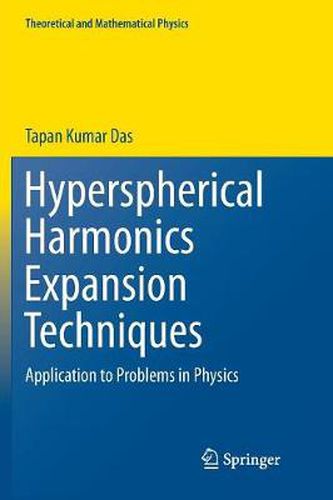Readings Newsletter
Become a Readings Member to make your shopping experience even easier.
Sign in or sign up for free!
You’re not far away from qualifying for FREE standard shipping within Australia
You’ve qualified for FREE standard shipping within Australia
The cart is loading…






This title is printed to order. This book may have been self-published. If so, we cannot guarantee the quality of the content. In the main most books will have gone through the editing process however some may not. We therefore suggest that you be aware of this before ordering this book. If in doubt check either the author or publisher’s details as we are unable to accept any returns unless they are faulty. Please contact us if you have any questions.
The book provides a generalized theoretical technique for solving the fewbody Schroedinger equation. Straight forward approaches to solve it in terms of position vectors of constituent particles and using standard mathematical techniques become too cumbersome and inconvenient when the system contains more than two particles. The introduction of Jacobi vectors, hyperspherical variables and hyperspherical harmonics as an expansion basis is an elegant way to tackle systematically the problem of an increasing number of interacting particles. Analytic expressions for hyperspherical harmonics, appropriate symmetrisation of the wave function under exchange of identical particles and calculation of matrix elements of the interaction have been presented. Applications of this technique to various problems of physics have been discussed. In spite of straight forward generalization of the mathematical tools for increasing number of particles, the method becomes computationally difficult for more than a few particles. Hence various approximation methods have also been discussed. Chapters on the potential harmonics and its application to Bose-Einstein condensates (BEC) have been included to tackle dilute system of a large number of particles. A chapter on special numerical algorithms has also been provided. This monograph is a reference material for theoretical research in the few-body problems for research workers starting from advanced graduate level students to senior scientists.
$9.00 standard shipping within Australia
FREE standard shipping within Australia for orders over $100.00
Express & International shipping calculated at checkout
This title is printed to order. This book may have been self-published. If so, we cannot guarantee the quality of the content. In the main most books will have gone through the editing process however some may not. We therefore suggest that you be aware of this before ordering this book. If in doubt check either the author or publisher’s details as we are unable to accept any returns unless they are faulty. Please contact us if you have any questions.
The book provides a generalized theoretical technique for solving the fewbody Schroedinger equation. Straight forward approaches to solve it in terms of position vectors of constituent particles and using standard mathematical techniques become too cumbersome and inconvenient when the system contains more than two particles. The introduction of Jacobi vectors, hyperspherical variables and hyperspherical harmonics as an expansion basis is an elegant way to tackle systematically the problem of an increasing number of interacting particles. Analytic expressions for hyperspherical harmonics, appropriate symmetrisation of the wave function under exchange of identical particles and calculation of matrix elements of the interaction have been presented. Applications of this technique to various problems of physics have been discussed. In spite of straight forward generalization of the mathematical tools for increasing number of particles, the method becomes computationally difficult for more than a few particles. Hence various approximation methods have also been discussed. Chapters on the potential harmonics and its application to Bose-Einstein condensates (BEC) have been included to tackle dilute system of a large number of particles. A chapter on special numerical algorithms has also been provided. This monograph is a reference material for theoretical research in the few-body problems for research workers starting from advanced graduate level students to senior scientists.